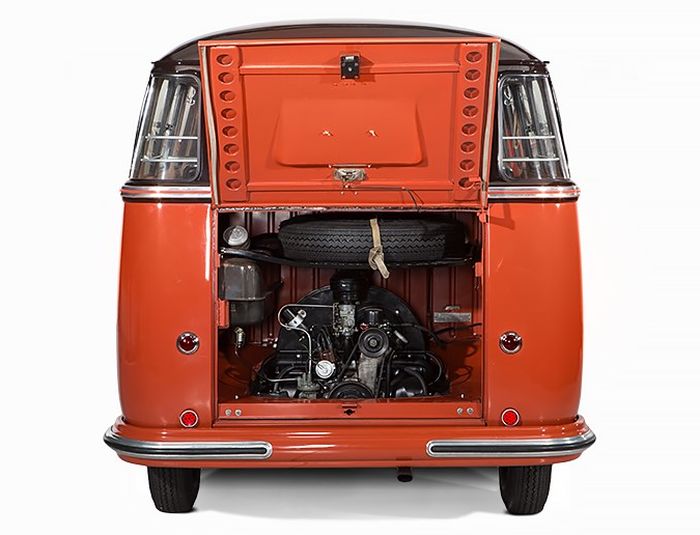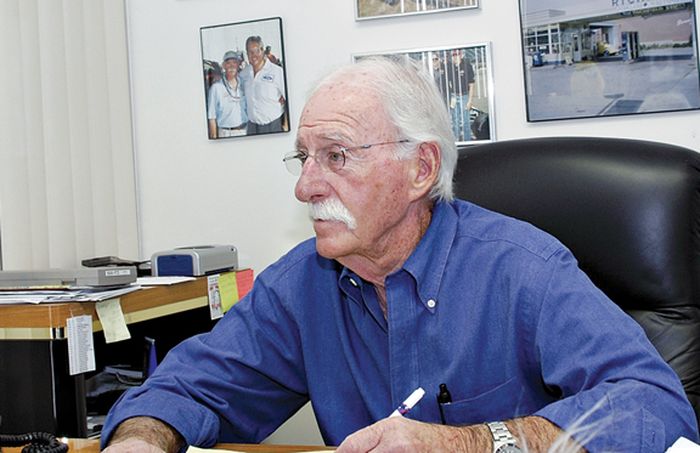Following its SEMA reveal, restored Blue Devil prototype returns to the National Corvette Museum
The restored Blue Devil prototype on display at SEMA. Photo by author.
It took just six weeks for the team of craftsmen at the GM Heritage Center to transform the sinkhole-damaged 2009 ZR-1 Blue Devil prototype from an as-recovered to an as-delivered state, and the restored Corvette was prominently displayed in Chevrolet’s booth at the 2014 SEMA Show. Following the show’s wrap-up last Friday, the Blue Devil has become the first of the sinkhole-damaged Corvettes to return to the National Corvette Museum in Bowling Green, Kentucky.
The Blue Devil being pulled from the sinkhole in early March. Photo courtesy National Corvette Museum.
As one of the last cars to fall into the sinkhole, the Blue Devil was among the least damaged in the incident. In the interest of safety, teams approached the recovery of the car with caution, and it took three weeks before the ZR-1 prototype was lifted by crane from the top of the rubble to the floor of the damaged Skydome. Despite suffering a 30-foot fall in the collapse of the Skydome’s floor, the Corvette started without difficulty and was driven out of the building under its own power.
Inspecting the damage at the GM Heritage Center. Photo courtesy General Motors.
That’s not to say the car was undamaged, and an oil leak served as evidence that repairs would be more than just cosmetic. Upon its return to the GM Heritage Center, a full accounting of damage was compiled to serve as a starting point for the car’s restoration. The oil leak was traced to a cracked line from the car’s dry-sump oiling system, and a further inspection of the car’s underside revealed bent rear control arms on the left side. Remarkably, this was the extent of the mechanical damage to the car, but the cosmetic damage was somewhat more extensive. The passenger side rocker panel had been punctured by debris, and much of the car’s carbon-fiber ground effects package had been cracked. The windshield was cracked, as was the hood glass and passenger headlamp; cracks in the bodywork were discovered on the passenger front fender and both doors. Parts were repaired, replaced and repainted as needed, but every effort was made to preserve as much of the original car as possible, as the prototype was one of two cars constructed to debut the ultra high-performance Corvette ZR-1 in January of 2008.
Undergoing restoration. Photos courtesy General Motors.
A month and a half after its September delivery to GM, the restored Blue Devil was driven out of the Heritage Center and loaded on a truck bound for SEMA. On display at the show, the Blue Devil prototype once again looked pristine, and even a trained eye would have had a difficult time spotting the repaired and repainted panels. Returned to the National Corvette Museum on Tuesday, November 11, the Blue Devil prototype became the first of the sinkhole-damaged Corvettes to complete its journey, and in the next eight months the car will be joined by the 1962 Corvette and the 1992 convertible that was the 1,000,000th Corvette built. The 1992 Corvette will be restored by the staff at GM’s Heritage Center, while the repair of the 1962 Corvette will be handled by a shop chosen by the National Corvette Museum.














































